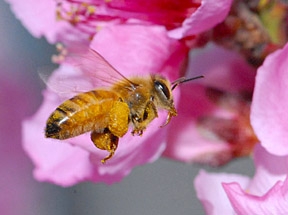
Unless you're in Galveston, Texas.
The 2011 North American Bee Conference and Trade Show is taking place Jan. 4-8 in Galveston.
They arrived from all parts of the world to bee "Together for a Sweet Future"--their theme.
This event is a joint effort of the American Beekeeping Federation, American Honey Producers Association and the Canadian Council to produce what the organizers say is "the most innovative beekeeping conference in North America."
Among those participating:
- American Association of Professional Apiculturists (AAPA)
- American Bee Research Conference (ABRC)
- Apiary Inspectors of America (AIA)
- National Honey Packers and Dealers Association (NHPDA)
One of the speakers is bee breeder-geneticist Susan Cobey, who has a dual appointment with the University of California, Davis and Washington State University. Her topic: "The UC Davis and WSU Stock Importation Project."
She just returned from teaching queen bee insemination classes in New Zealand, where, she confides "Santa Claus wears shorts."
Participants in her insemination class were "mostly from the beekeeping industry," she said. The Plant & Food Research Institute is concerned about the Varroa mite, the nasty little parasite that's sucks the blood of the brood and adults. So building a better hygienic bee is crucial.
Honey bee guru Eric Mussen, Extension apiculturist in the UC Davis Department of Entomology, is also one of the key players at the conference.
One of the major concerns is still colony collapse disorder (CCD), the mysterious phenomenon characterized by adult bees abandoning the hive, leaving behind the brood, queen bee and stored food. Without the worker bees, the hives collapse.
The U.S. Department of Agriculture (USDA) just released its 2010 Colony Collapse Disorder Report and the news is not good. General colony losses increased to 34 percent in 2010.
The report, produced by USDA's Agricultural Research Service (ARS) and National Institute of Food and Agriculture, indicated that before CCD, "losses averaged 15-20 percent annually from a variety of factors such as varroa mites and other pests and pathogens."
It's a tough time for beekeepers struggling with CCD in their colonies. And now, California almond growers are gearing up for the almond pollination, which starts around Feb. 1. California has more than 700,000 acres of almonds and each acre requires two hives for pollination.So, shortly after leaving the Lone Star State, many of the beekeepers will be heading for the Golden State.
Let's hope the outcome is golden.
- The UCD and WSU Stock Importation Project - presented by Dr. Susan Cobey, University of California
Attached Images:

A. G. Kawamura and Susan Cobey